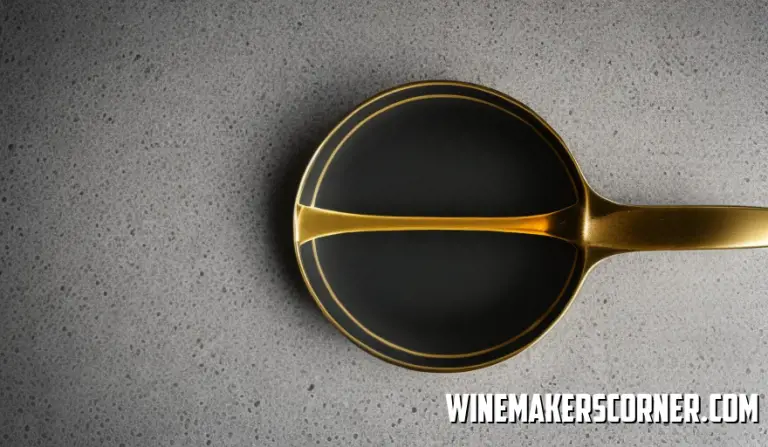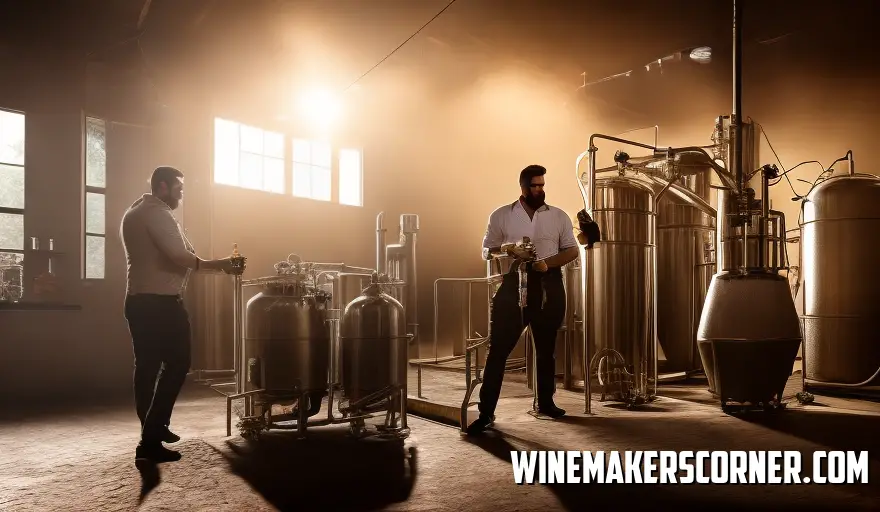There is certainly an art to creating that flawless glass of wine! From harvesting grapes with meticulous care to crushing them perfectly; there are many steps along the way towards crafting the ideal tipple. Have you thought about how important it is to include potassium metabisulfite in this process? Though not quite as glamorous as those beautiful grapes or exquisite oak barrels this unassuming compound can truly elevate your wines taste from good to exceptional. In this all inclusive dosage guide we will explore everything regarding potassium metabisulfite per gallon so that even novice oenophiles can understand its intricacies with ease. So fellow wine enthusiasts, lets start this exciting journey through the captivating worlds of science and flavor!
Understanding Potassium Metabisulfite
Potassium metabisulfite is a crucial ingredient that plays an important role in winemaking. This compound acts as an antioxidant and antimicrobial agent- essential for preserving the quality of wine. It keeps undesirable microorganisms at bay ensuring a delightful final product. To achieve optimal results it is essential to understand the purpose and dosage of potassium metabisulfite. Dosage is crucial; too little or too much can negatively impact taste and stability.
Most winemakers use 1/4 teaspoon of potassium metabisulfite for every gallon of wine; however this can vary based on factors such as pH levels and desired sulfite concentration. Overdosing can be harmful causing off flavors and allergies in some individuals sensitive to sulfites- so always follow recommended guidelines when using potassium metabisulfite.
Timing also plays a role the addition of this compound depends on the stage of winemaking primary fermentation, secondary fermentation, or bottling time. Therefore mastering potassium metabisulfite dosage is key to producing exceptional wines with long shelf lives and minimal spoilage risk while staying within safe limits.
In conclusion experimenting with potassium metabisulfite is great as long as you stay within safe limits because your palate will thank you!
The Role of Potassium Metabisulfite in Wine Making
Winemaking involves various processes with multiple critical steps towards producing quality products. One vital component is potassium metabisulfite known for its ability to sanitize equipment protect against oxidation and preserve freshness and color in wines. To sanitize equipment thoroughly mix two ounces of potassium metabisulfite with one gallon of water; its potency kills bacteria and yeast contamination risk effectively. Preventing oxidation is another crucial function achieved through using approximately a quarter teaspoon per five gallons during racking or bottling effectively.
Preservation generally utilises free sulfur dioxide levels at 25 50 ppm with consistent use of potassium metabisulfite warding off spoilage from microorganisms risk.
Lastly using approximately a quarter teaspoon of potassium metabisulfite per five gallons keeps free SO2 level at around 225 ppm when added directly for preservation purposes even though only half remains after reacting with other compounds present in the wine
Overall by correctly utilizing this essential ingredient appropriately at every stage from production to preservation makes all the difference towards ensuring creating high quality wines that stand out over time. As any experienced winemaker knows, finding the right balance is key. The consequences of using insufficient or excessive amounts of certain elements can make or break the final product; spoiled wine or unpleasant taste/aroma are both unfortunate outcomes of not achieving proper balance.
Therefore always aim for optimum balance with each batch you create – Happy Winemaking!
Determining the Right Dosage Per Gallon
For winemakers its crucial to determine the appropriate dosage of potassium metabisulfite per gallon. This chemical compound acts as a preservative, disinfectant, and antioxidant serving an essential role in maintaining wine quality by eliminating unwanted bacteria and preventing oxidation. The perfect dose varies based on factors such as wine variety, pH levels, and individual preferences.
When thinking about wine type red varieties require less potassium metabisulfite than whites.
This is due to the higher tannin content present in red wines that act as a natural antioxidant. Conversely white wines are more vulnerable to oxidation and need more significant doses of potassium metabisulfite. Moreover assessing your wines pH level is critical when deciding the correct dosage to apply; higher pH levels need larger amounts of potassium metabisulfite for efficacy. For example a wine with a pH of 3.6 may require twice the amount compared to one with a pH of 3.0. Individual preferences also play an essential role while deciding how much potassium metabisulfite one should add per gallon.
Some winemakers might prefer minimal intervention by applying just enough potassium metabisulfite to safeguard their wine while conserving its natural characteristics. On the other hand others may opt for higher dosages for ensuring more extended shelf life and stability. As a general rule of thumb: Red wines use 50 75 ppm (parts per million) or approximately ¼ teaspoon per five gallons; white wines use 75 100 ppm or roughly ⅜ teaspoon per five gallons. Precise measuring is vital while making adjustments based on taste preferences.
Remember that less is often more when it comes to using potassium metabisulfite – excessive amounts can cause off flavors or even allergic reactions for some consumers.
Always err on the side of caution while determining dosage per gallon.
In conclusion determining the optimal dosage of potassium metabisulfite requires attention to detail and an understanding of your wines unique requirements.
By considering factors such as wine type, pH levels, and individual preferences winemakers can strike a balance between preservation and taste to create their perfect bottle.
Factors Affecting Dosage Requirements
Crafting a fascinating bottle of wine requires precision and artistry at every step; one crucial component is determining the appropriate potassium metabisulfite dosage level – here we discuss key factors influencing this determination.
pH levels play an integral role since wines with high values have lower acidity and greater potential for oxidation and spoilage that require more potassium metabisulfite to be adequately protected.
Lower pH requires less.
Wine type should not be neglected too. Red wines contain natural antioxidants such as tannins compared to white or rosé wines requiring lower doses compared to whites when utilizing potassium metabisulfite.
Other important considerations include must cleansing during pressing since impurities can foster bacterial growth or oxidation demanding larger amounts of this compound for prevention.
Storage conditions like prolonged oxygen exposure & changes in temperature affect your wines stability leading you to use extra amounts of this supplement accordingly. Finally personal preference also comes into play determining the desired amount of intervention by using either fewer or heavier doses according to the winemakers preference.
In conclusion achieving excellently crafted bottles requires attention & diligence using proper dosage levels with consideration given to elements such as PH value, wine type,& cleanliness during processing along with careful storage conditions coupled with personal preference. This creates an ideal bottle worth raising your glass too…Cheers!
Common Mistakes to Avoid When Using Potassium Metabisulfite
To maintain high quality wine using this widely used preservative careful handling of potassium metabisulfite is crucial since incorrect usage can cause adverse effects compared to its benefits. This article discusses some common mistakes to avoid when dealing with potassium metabisulfite per gallon of wine.
One prevalent mistake many make is dosing inaccurately leading to a sulfur aroma or a chemical aftertaste when overdosed; otherwise underdosing will make your wine vulnerable to spoilage and oxidation.
Prevent these negative consequences by getting accurate measuring tools and always following recommended dosage guidelines.
Another mistake is skipping the pre dissolving process before pouring potassium metabisulfite into your wine batch. Directly adding the powder to the mixture can render it ineffective as it won’t distribute evenly across the liquid. Consider dissolving your required dose in a small bit of water or wine before adding it.
Temperature also impacts potassium metabisulfites effectiveness since storing it in warm places could lessen its potency over time. Optimal preservation demands that you keep it in cool and dry storage away from sources of direct sunlight and heat.
Ignoring expiration dates when handling potassium metabisulfite could pose a risk since expired products do not offer complete protection against spoilage organisms and oxidation damage.
Always check for expiration dates when handling this compound.
Lastly prioritize safety precautions when working with potassium metabisulfite as contact with the skin or particles inhalation during preparation steps results in irritation. While handling this compound wear gloves and masks while ensuring proper ventilation in your workspace at all times.
In conclusion following recommended guidelines and avoiding common mistakes while using potassium metabisulfite per gallon of wine preserves your beverages quality while ensuring a delightful taste.
The Impact of Overdosing and Underdosing
The impact of using too much or too little potassium metabisulfite when making wine cannot be overstated. The perfect balance must be struck to guarantee optimum product quality because getting this delicate equilibrium wrong can result in either an enjoyable or disastrous drinking experience.
Overdosing on potassium metabisulfite is a risky move as excessive amounts can cause off odors which would significantly affect your wines aroma profile.
An allergic reaction, sulfurous odor, comparable to burnt matches or rotten eggs may overwhelm fruity notes which will cause distress even in sensitive individuals. By contrast underdosing opens up risks of spoilage organisms like bacteria and yeast attacking your wine while oxidation is more likely causing accelerated aging and declining flavor quality. Its essential to measure accurately using precise tools such as titration kits or digital scales. Remember less is often more when dosing per gallon of wine.
Its vital also to be experimental as grape batches present unique challenges influenced by pH level and variety which determines how much potassium metabisulfite you need for optimal preservation. Its worth noting that overdosing or underdosing with potassium metabisulfite will significantly impact product quality. A meticulous approach to measurement coupled with experimentation enables development of a sniffer instinct that enables discovery of the perfect dosage balance – resulting in consistently delightful wines.
Storage and Handling Tips for Potassium Metabisulfite
Winemaking requires preserving quality through critical ingredients like potassium metabisulfite that serves vital roles through its antioxidant and antimicrobial activities. To attain excellent results when using potassium metabisulfite requires proper storage techniques.
Ensuring adequate storage containers for this ingredient topped the list of crucial factors that one needs to consider carefully since these play a significant role in determining how effective and long lasting the potassium content will be during wine production.
Suitable options involve glass jars with well fitting lids or plastic containers with enhanced chemical resistance and hermetic sealing. Potassium metabisulfite is sensitive to air exposure; hence selecting a tamper proof container is key to optimal preservation.
Humidity also poses a challenge when it comes to the ability of potassium metabisulfite to withstand clumping and reduction inefficiency making it necessary for cool dry storage locations that are away from moisture. Monitoring room temperature during storage is equally vital since fluctuation can compromise the chemical composition of this compound.
Stable temperatures between 50 70°F (10 21°C) are optimal. Storage secured away from direct sunlight and heating elements also help avoid unnecessary degradation problems.
Working with potassium metabisulfite necessitates observing safety measures such as using protective gear like gloves, masks, and goggles during winemaking activities.
Accidental contact requires immediate medical attention.
Lastly expired potassium metabisulfite can result in compromised wine quality, necessitating monitoring of the expiry date that typically lasts up to two years unless visibly compromised or exposed to inappropriate environmental conditions. In conclusion: choose appropriate sealed containers; ensure your storage space is dry and cool; control room temperature fluctuations; handle this compound correctly observing safety measures; and monitor expiry dates for an excellent wine preservation outcome when using potassium metabisulfite.
Frequently Asked Questions About Dosage
When it comes to potassium metabisulfite dosage there are many questions that arise for those looking to produce high quality well preserved wines. In this section we’ll be addressing some of the most frequently asked questions on the topic so get ready to dive into the world of wine preservation with our ultimate dosage guide. Firstly lets define what potassium metabisulfite is.
This white crystalline powder serves as an antioxidant and preservative in winemaking. By releasing sulfur dioxide (SO2) gas it prevents oxidation and spoilage while inhibiting unwanted bacterial and yeast growth. Now lets explore how much should be added per gallon.
The general rule is 1/4 teaspoon per five gallons or 1/16 teaspoon per one gallon of wine. However certain factors such as pH levels, wine type and personal preference should also be taken into account when determining dosage amounts. Its important to note that excessive use can lead to off flavors or excessive sulfite content in your wine; therefore measuring dosages carefully becomes crucial – small increments can make a significant difference.
Moving on to whether potassium metabisulfite affects flavor – when used correctly this impact should be minimal. Nonetheless in certain cases individuals may detect a slight “burnt match” aroma if levels are too high. Now lets discuss when the substance should be added during the winemaking process.
Winemakers typically add potassium metabisulfite at various stages: during crushing or pressing the grapes to eliminate wild yeasts/bacteria; after fermentation to prevent oxidation; and before bottling as a final preservative measure.
Lastly some individuals may experience allergic reactions or sensitivity to sulfites present in wines treated with potassium metabisulfite. If this is a concern for you consider alternatives such as Campden tablets (made from sodium metabisulfite) or exploring organic winemaking methods that avoid synthetic additives altogether.
In conclusion understanding proper potassium metabisulfite dosages is essential for producing high quality well preserved wines. Remember to consider factors like wine type, pH levels and personal preference when determining the right amount for your batch.
Congratulations on your venture into winemaking!




